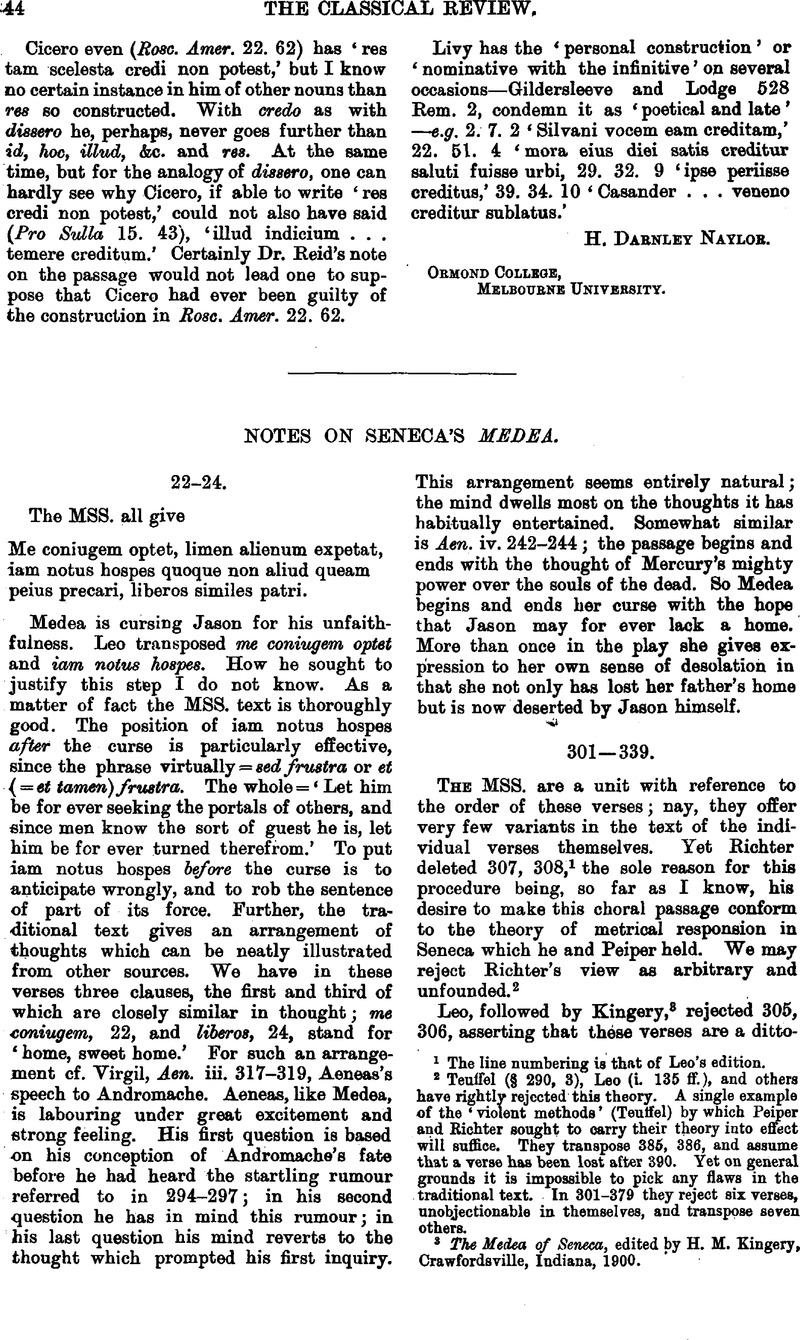No CrossRef data available.
Article contents
Notes on Seneca's Medea
Published online by Cambridge University Press: 27 October 2009
Abstract

- Type
- Original Contributions
- Information
- Copyright
- Copyright © The Classical Association 1903
References
page 44 note 1 The line numbering is that of Leo's edition.
page 44 note 2 Teuffel (§ 290, 3), Leo (i. 135 ff.), and others have rightly rejected this theory. A single example of the ‘violent methods’ (Teuffel) by which Peiper and Richter sought to carry their theory into effect will suffice. They transpose 385, 386, and assume that a verse has been lost after 390. Yet on general grounds it is impossible to pick any flaws in the traditional text. In 301–379 they reject six verses, unobjectionable in themselves, and transpose seven others.
page 44 note 3 The Medea of Seneca, edited by Kingery, H. M., Crawfordsville, Indiana, 1900.Google Scholar
page 45 note 1 In passing we may note the resemblance between 305, 306, and Juv. xii. 57 ff. ‘I nune et ventia animam committe, dolato Confians ligno,’ &c. For another verbal resemblance between Seneca's Medea and Juvenal cf. aurea pellis, Medea 361, with fur tivae… aurum pelliculae, Juv. i. 10, 11.
page 45 note 2 In his Latin Literature of the Empire, ii. pp. 100, 101, Prof. Gudeman prints this chorus after Leo, but in bis Appendix Critica, p. 490, he writes : ‘traditum ordinem rectum esse nunc mini persnasit M. Muellerus.’ Where, when, or how he was thus persuaded he does not say.
page 46 note 1 The foregoing note was part of a paper read at the meeting of the American Philological Association, July, 1902.
page 46 note 2 I have discussed this point in the Proceedings of the American Philological Association for 1902.


